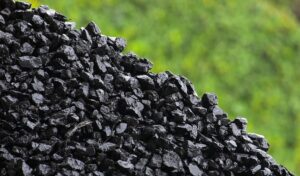
In January-November of this year, Ukraine increased imports of aluminum ore and concentrate (bauxite) in physical terms by 25.9% compared to the same period last year, to 37,944 thousand tons.
According to statistics released by the State Customs Service (SCS) on Friday, during this period, bauxite imports in monetary terms increased by 14.8% to $4.214 million.
At the same time, imports were mainly from Turkey (81.91% of supplies in monetary terms), China (15.62%), and Guyana (2.47%).
Ukraine did not re-export bauxite in 2025, as in 2024 and 2023.
As reported, in 2024, Ukraine increased its imports of bauxite in physical terms by 77.4% compared to 2023, to 35,173 thousand tons, and in monetary terms by 74%, to $4.107 million. Imports were mainly from Turkey (78.48% of supplies in monetary terms), China (19.48%), and Spain (1.9%).
In 2023, Ukraine imported 19,830 thousand tons of bauxite worth $2.360 million.
In 2022, Ukraine reduced imports of aluminum ores and concentrates (bauxite) in physical terms by 81.5% compared to the previous year, to 945,396 thousand tons. Bauxite imports in monetary terms decreased by 79.6% to $48.166 million. Imports were mainly from Guinea (58.90% of supplies in monetary terms), Brazil (27.19%), and Ghana (7.48%).
Bauxite is an aluminum ore used as a raw material for producing alumina, which is then used to produce aluminum. It is also used as a flux in ferrous metallurgy.
Bauxite is imported into Ukraine by the Mykolaiv Alumina Plant (MAP).

In January–November 2025, Ukraine increased its imports of electric generators and rotating electrical converters by 3.2 times compared to the same period in 2024, to $1.513 billion, according to data from the State Customs Service.
The most active suppliers were countries of the European Union. The leaders were Romania — $321.6 million (21.3% of total imports), the Czech Republic — $271.2 million (17.9%), and Poland — $189.1 million (12.5%). For comparison, a year ago, the largest exporters of generator equipment to Ukraine were China (24.2% or $115 million), Turkey (18.5%), and the Czech Republic (15.6%).
In November 2025, generator imports grew by 27.2% compared to November 2024, reaching $116.4 million, but were 38% lower than in October.
Exports of Ukrainian electric generators for 11 months amounted to only $3.6 million (a year earlier — $1.6 million), with the Czech Republic, Latvia, and Bulgaria being the main destinations.
The growth in imports is linked to ongoing programs to strengthen energy security and backup power supply, as well as the current exemption from customs duties and VAT on the import of electric generators, introduced by the Ukrainian government in the summer of 2024.

Imports of electric batteries and separators to Ukraine in January–November 2025 increased by 52% compared to the same period last year and amounted to $1.232 billion, according to the State Customs Service.
China remains the main supplier, accounting for $900.2 million (73.2% of the total volume), followed by Vietnam ($96.7 million, 7.9%) and Taiwan ($54.2 million, 4.4%). For comparison, in 2024, China accounted for 83.2% of imports, while the Czech Republic and Bulgaria accounted for 2.8% and 2.7%, respectively.
In November 2025, battery imports grew by 43.6% compared to November 2024, reaching $177.7 million, which is also 22.6% higher than in October.
At the same time, Ukraine exported batteries worth $47.6 million, which is 26% more than a year earlier. The largest buyers were Poland (32.7%), Germany (13%), and France (11.5%).
The increase in imports of battery systems is explained by steady demand from energy companies, telecom operators, and household consumers, as well as the effect of state subsidies for battery imports, approved in July 2024.
By the end of 2024, total imports of batteries to Ukraine had more than doubled to $950.6 million, and in 2025, they continue to grow rapidly thanks to the modernization of the energy system and the development of the market for autonomous power sources.

In January-November 2025, Ukraine increased imports of coal and anthracite (UKTZED code 2701) by 2.4 times (by 2 million 415.314 thousand tons) compared to the same period last year, to 4 million 134.636 thousand tons.
According to the State Customs Service of Ukraine, coal imports amounted to $929.485 million in the first eleven months of this year, which is 2.4 times ($546.653 million) more than in January-November 2024.
Coal imports from the US amounted to $374.498 million (40.29%), Australia – $281.793 million (30.32%), Poland – $90.872 million (9.78%), and other countries – $182.322 million (19.62%).
As reported, Ukraine increased coal imports by 2.7 times (by 1 million 145,951 thousand tons) in 2024 compared to 2023, to 1 million 812,592 thousand tons. In monetary terms, it imported $402.219 million worth of coal, which is 2.2 times more than the previous year ($185.378 million).

Total foreign trade in dairy products in November amounted to $54.7 million, up 3.3% from October ($53 million), according to the Ukrainian Dairy Industry Association (UDIA).
The industry association noted that export volumes in November continued to grow for the second month in a row and amounted to $23.84 million, adding 12.7% compared to October ($21.16 million) and 15.4% compared to September ($20.7 million).
At the same time, the value structure of exports in November 2025 was as follows: condensed milk and cream – 37%, cheese – 25%, butter – 21%. The value structure of exports in November 2025 compared to November 2024 changed slightly: the share of milk and condensed cream increased (from 30% to 37%) against the backdrop of a decrease in the share of cheese (from 32% to 25%).
Imports in November amounted to $30.9 million, down 2.9% from October ($31.8 million) and 2.2% from September ($31.6 million). In November 2025 compared to November 2024, the value structure of imports did not change significantly, in particular, the share of all types of cheese remained at about 84%.
The export-import balance in November was negative (-$7.0 million), as it was in October (-$10.6 million) and September (-$10.9 million), the association noted.
The ratio of exports to imports was 0.77 in November, 0.67 in October, and 0.65 in September.
Imports of dairy products in November this year exceeded exports by 1.3 times, the SMU summarized.